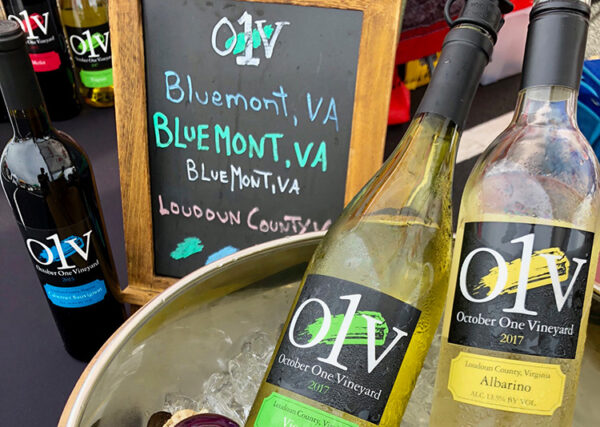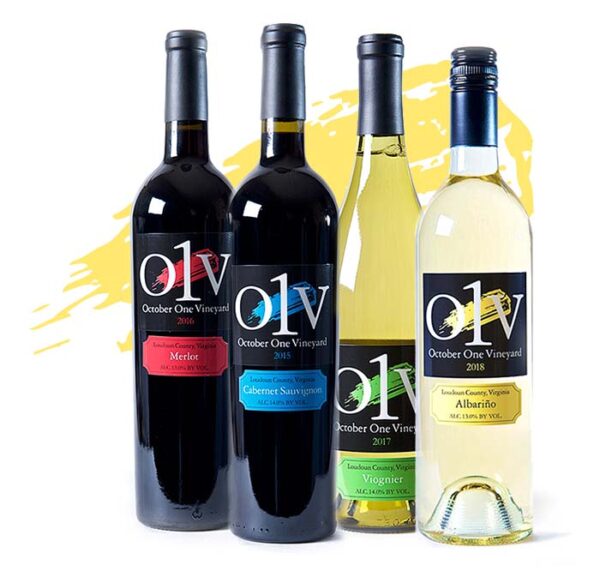In our last blog, we discussed expanding your knowledge and improving your wine consumption techniques to increase your enjoyment of October One Vineyard’s wine.
We discussed the concept of knowing your wine. Its place of origin, how it is hand harvested, and optimal serving temperatures.
This article will discuss proper glasses, how to taste wine, and caring for your October One Vineyard wine.
Glassware
Use good quality wine glasses with a thin rim and an opening that narrows at the top to concentrate the aromas to your nose. There is such a thing as an official wine-tasting glass. They are excellent for evaluating wine and concentrating the aromas at the top of the glass.

Tasting
To date, all of October One Vineyard’s wines are made in a dry style. Dry wines have no detectable sweetness, off-dry or semi-sweet wines have a little sweetness, and sweet wines are noticeably sweet, while dessert wines are thick with sweetness. And sparkling wines have bubbles created by CO2 gas trapped in the wine.
The nose
It’s exciting and fun identifying aromas in wine. And by first gently swirling your glass, then taking a sniff or two, you can gain critical first impressions. After the first impression sniffs, rest your nose for a few seconds, then tip your glass towards you, put your nose into the glass, and shut out everything from your mind as you slowly, deeply inhale through your nose. During the four or five seconds of inhaling, concentrate on the aromas as they appear one after the other.
Describe what you are smelling without hesitation as it comes to your mind. There are no wrong answers. Some general aroma categories are floral, citrus, fruit, spice, vegetables, and earthiness. Wine aromas are in the hundreds, and you can detect them with practice.
The palate
Get acquainted with the wine by tasting it, but don’t start evaluating it until you taste it a second or a third time. The first taste is for getting your senses primed. Move the wine around your mouth so it contacts all your taste buds on the tip, sides, and back of your tongue. Draw air through the wine while tipping your head forward slightly to give you an even better sense of the aromas and tastes. Be careful; this would be considered rude sounding in public.
As you taste, remember that Tannin will dry your mouth, as if you are drinking a cup of tea that is well steeped. The wine’s acid will cause you to pucker, as when eating a tart apple. The alcohol may cause your nose to burn slightly or taste bitter at the back of your tongue.

After fermentation is complete, wine purposefully exposed to yeast cells is called sur lees or on the lees. Sur lees aging creates flavors of toast, bread-like aromas, cheese or buttermilk-like aromas, floral elderflower-like aromas, and sometimes sweet, nutty aromas. Oak aging will contribute flavors of smoke, spice, clove, caramel, cocoa, coffee, sweet peppers, dill, coconut, dried fruit, nuts, and burnt sugar. But more on oak aging in a later blog post. After you swallow, look for a pleasant finish, a lingering taste. The longer, the better.
Caring for your October One Vineyard wine
In the short term, after purchasing your O1V wine, keep it cool and out of sunlight; for long-term cellaring, attempt to replicate the conditions of a cave. Keep the temperature stable between 50-59° F, the humidity at 60-75%, and eliminate light exposure.
Knowing your wine is what we hope for. Knowing its place of origin. Understanding the care and skill employed in making it and learning techniques to get the most from October One Vineyard’s wine.